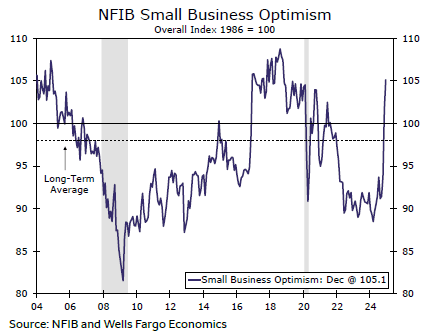Small business optimism shoots up in December

Summary
Small business optimism on the upswing
Small business sentiment continued to improve in December alongside greater economic and public policy certainty. The NFIB Small Business Optimism Index rose 3.4 points to 105.1, reaching its highest level since October 2018. Ongoing Fed easing coupled with a settled 2024 election likely played a role. The net share of owners anticipating better business conditions over the next six months soared to 52%, the second highest reading on record since the survey began in 1987. Meanwhile, small business owners generally reported easier access obtaining loans and expectations for more favorable credit conditions over the coming months. Labor demand also showed some early signs of stabilization, evidenced by an improvement in hiring plans in December. Yet progress on disinflation continued to stall, keeping inflation the top concern for small firms.
Download The Full Economic Indicator
Author

Wells Fargo Research Team
Wells Fargo


















